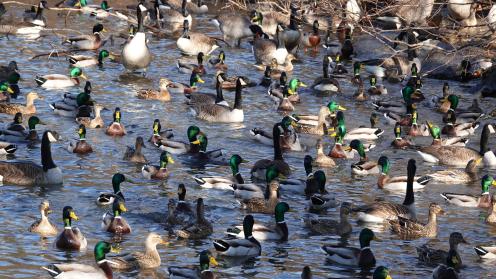Issues of biosafety and marine and coastal biodiversity dominated the day’s discussions. Biosafety considerations are addressed by the Cartagena Protocol (CP) of the Convention on Biological Diversity (CBD), which aims to ensure the safe handling, transport, and use of living modified organisms (LMOs) that may have adverse effects on biodiversity, taking into account risks to human health. The CBD programme of work on marine and coastal biodiversity, adopted in 1998 and reviewed in-depth in 2010, is one of the basic pillars of the Convention and discussions attract increasing interest — particularly on ecologically or biologically significant marine areas (EBSAs).
Want to dig deeper into today's talks? Read the full Earth Negotiations Bulletin daily report.
In the morning, delegates concluded their discussions on synthetic biology, which started on Monday, focusing on the multidisciplinary ad hoc technical expert group (mAHTEG)’s work on horizon scanning, monitoring, and assessment of the most recent technological developments in synthetic biology. Consensus could not be reached on extending the mAHTEG’s mandate and discussions will continue in a contact group.
On risk assessment and risk management, delegates welcomed the additional voluntary guidance materials to support case-by-case risk assessments of LMOs containing engineered gene drives, suggesting collecting and sharing experiences of using the guidance. Opinions diverged on the development of future voluntary guidance, namely on living modified fish.
In the afternoon session, delegates agreed that the Training Manual on the Detection and Identification of LMOs, released in 2022, remains relevant and does not require updating at this stage. Many stressed the importance of information sharing on new identification technologies and focused capacity building. They further highlighted the importance of networks of laboratories for LMO detection and identification.
Conference room papers will be prepared on risk assessment and risk management as well as on detection and identification of LMOs for further discussion.
On marine and coastal biodiversity, delegates discussed future work on EBSAs, focusing on the outcomes of the expert workshops to review modalities for modifying the descriptions of EBSAs and describing new ones, and the draft recommendations. They further supported the review and analysis of the work programmes on marine and coastal biodiversity, and on island biodiversity, making proposals to further strengthen them.
Delegates continued their negotiations into the evening with two contact group meetings, aiming to advance discussions on the monitoring framework of the Kunming-Montreal Global Biodiversity Framework (GBF) and synthetic biology.
To receive free coverage of global environmental events delivered to your inbox, subscribe to the ENB Update newsletter.
All ENB photos are free to use with attribution. For CBD SBSTTA 26 and SBI 4, please use: Photo by IISD/ENB Mike Muzurakis.





































